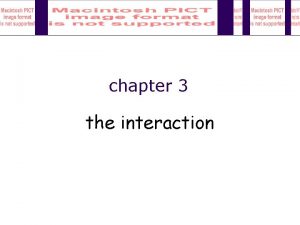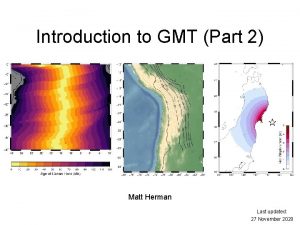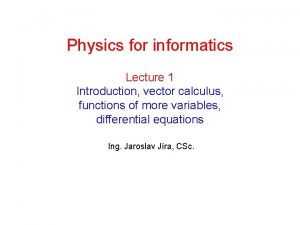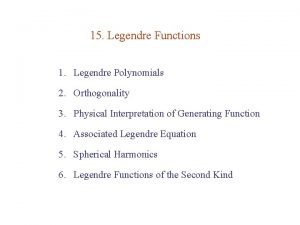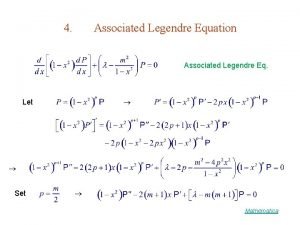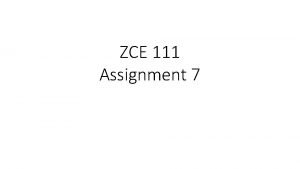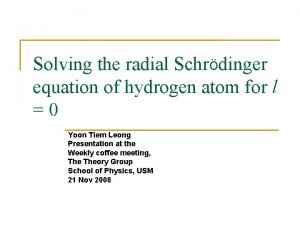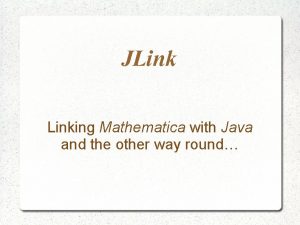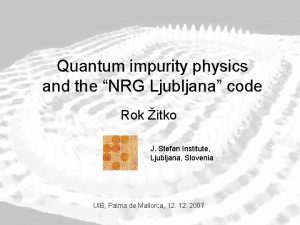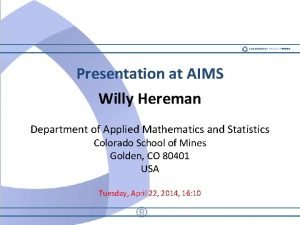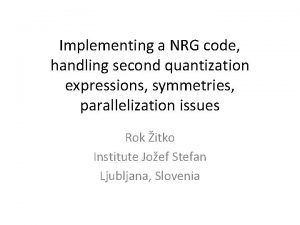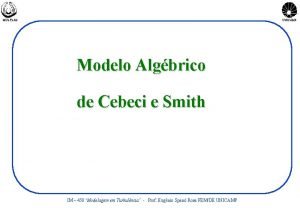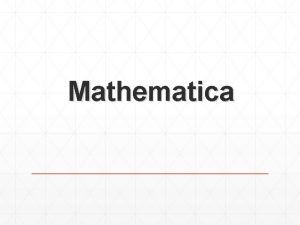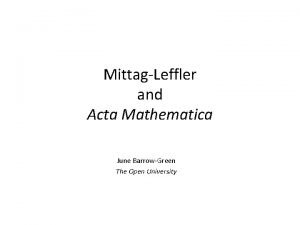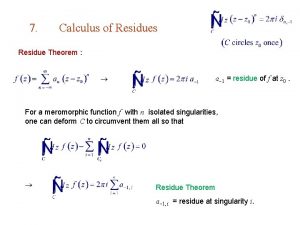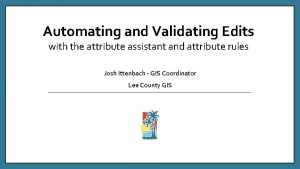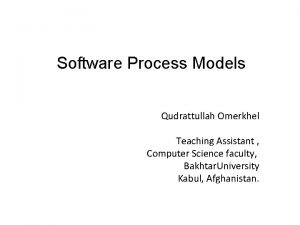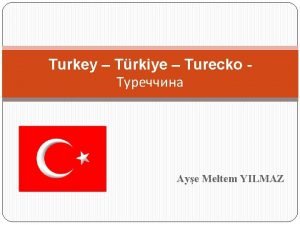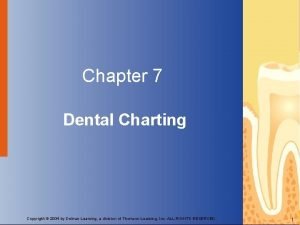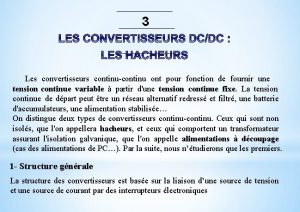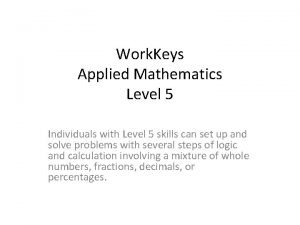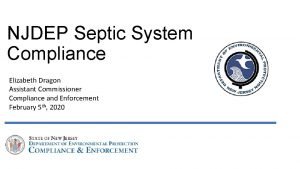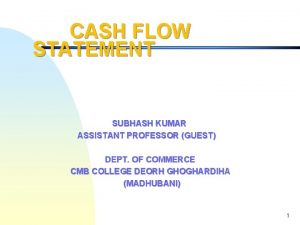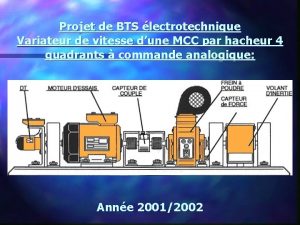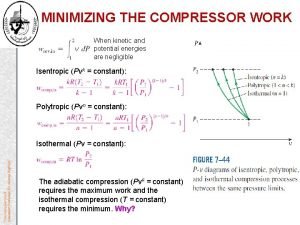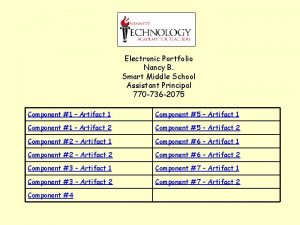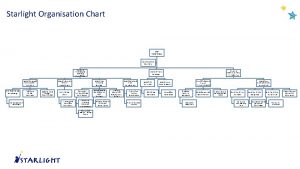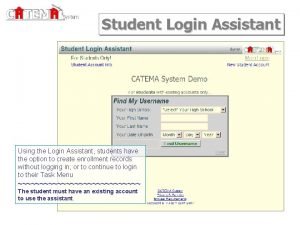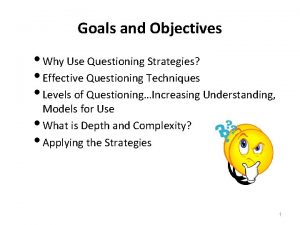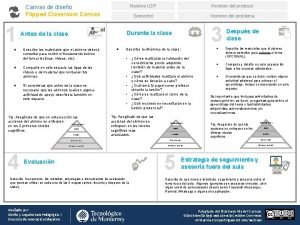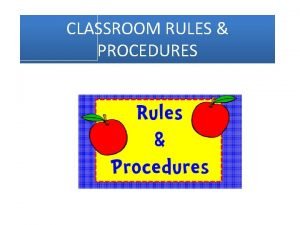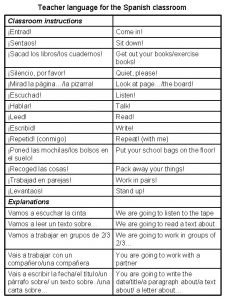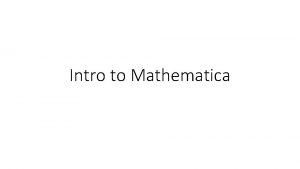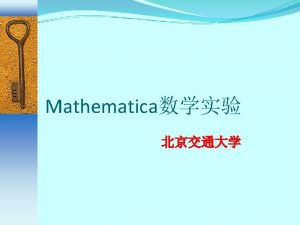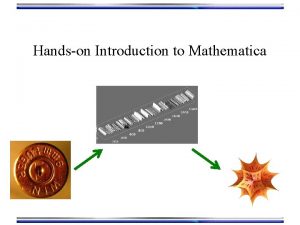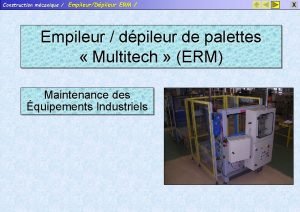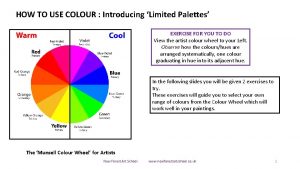Mathematica Mathematica Palettes Classroom Assistant Mathematica Palettes Classroom

























![Mathematica 기본이론 -Note- Wolfram 언어의 사칙연산 함수를 통해서도 계산이 가능하다. 2+2 : Plus[2, 2] Mathematica 기본이론 -Note- Wolfram 언어의 사칙연산 함수를 통해서도 계산이 가능하다. 2+2 : Plus[2, 2]](https://slidetodoc.com/presentation_image_h/ae61c604b880f564b0ba75fe3eeec189/image-26.jpg)









![Mathematica 기본이론 11. N[ ] : 수치계산 / NSolve[ ] Mathematica 기본이론 11. N[ ] : 수치계산 / NSolve[ ]](https://slidetodoc.com/presentation_image_h/ae61c604b880f564b0ba75fe3eeec189/image-36.jpg)


















































![Mathematica 기본이론 -Note- Wolfram 언어의 사칙연산 함수를 통해서도 계산이 가능하다. 2+2 : Plus[2, 2] Mathematica 기본이론 -Note- Wolfram 언어의 사칙연산 함수를 통해서도 계산이 가능하다. 2+2 : Plus[2, 2]](https://slidetodoc.com/presentation_image_h/ae61c604b880f564b0ba75fe3eeec189/image-87.jpg)









![Mathematica 기본이론 11. N[ ] : 수치계산 / NSolve[ ] Mathematica 기본이론 11. N[ ] : 수치계산 / NSolve[ ]](https://slidetodoc.com/presentation_image_h/ae61c604b880f564b0ba75fe3eeec189/image-97.jpg)


































































![Solution 1. 기초산술 1) 1234+5678 2) 1234*5678 3) 100/4 4) Plus[1234, 5678] , Times[1234, Solution 1. 기초산술 1) 1234+5678 2) 1234*5678 3) 100/4 4) Plus[1234, 5678] , Times[1234,](https://slidetodoc.com/presentation_image_h/ae61c604b880f564b0ba75fe3eeec189/image-164.jpg)
![Solution 2. 함수정의 1) f[x_]: = x^2 2) value=Random. Color[] , value: =Random. Color[] Solution 2. 함수정의 1) f[x_]: = x^2 2) value=Random. Color[] , value: =Random. Color[]](https://slidetodoc.com/presentation_image_h/ae61c604b880f564b0ba75fe3eeec189/image-165.jpg)
![Solution 3. Module 1) Module[{x = Range[10]}, x^2 + x] 2) Module[{x = Random. Solution 3. Module 1) Module[{x = Range[10]}, x^2 + x] 2) Module[{x = Random.](https://slidetodoc.com/presentation_image_h/ae61c604b880f564b0ba75fe3eeec189/image-166.jpg)

![Solution 5. Date 생성 1) Table[5, 10] 2) Table[n + 1, {n, 1, 10}] Solution 5. Date 생성 1) Table[5, 10] 2) Table[n + 1, {n, 1, 10}]](https://slidetodoc.com/presentation_image_h/ae61c604b880f564b0ba75fe3eeec189/image-168.jpg)
![Solution 6. Options 1) List. Plot[Table[x^2 + x, {x, 0, 10}], Plot. Theme -> Solution 6. Options 1) List. Plot[Table[x^2 + x, {x, 0, 10}], Plot. Theme ->](https://slidetodoc.com/presentation_image_h/ae61c604b880f564b0ba75fe3eeec189/image-169.jpg)

![Solution 8. Manipulate 1) Manipulate[List. Plot[Range[n]], {n, 5, 50, 1}] 2) Manipulate[Column[Table[a, n]], {n, Solution 8. Manipulate 1) Manipulate[List. Plot[Range[n]], {n, 5, 50, 1}] 2) Manipulate[Column[Table[a, n]], {n,](https://slidetodoc.com/presentation_image_h/ae61c604b880f564b0ba75fe3eeec189/image-171.jpg)
![Solution 9. 대학수학 1) Limit[(x^2+5^x)/(x^2+2 x), x->0] Plot[(x^2+5 x)/(x^2+2 x), {x, -2, 2}] 2) Solution 9. 대학수학 1) Limit[(x^2+5^x)/(x^2+2 x), x->0] Plot[(x^2+5 x)/(x^2+2 x), {x, -2, 2}] 2)](https://slidetodoc.com/presentation_image_h/ae61c604b880f564b0ba75fe3eeec189/image-172.jpg)
- Slides: 172

Mathematica














Mathematica 기본 사용법 명령어 입력방법 Palettes – Classroom Assistant

Mathematica 기본 사용법 명령어 입력방법 Palettes – Classroom Assistant

Mathematica 기본 사용법 명령어 입력방법 Palettes – Classroom Assistant


Mathematica 기본 사용법 Wolfram Documentation 검 색

Mathematica 기본 사용법 Wolfram Documentation

Mathematica 기본 사용법 Wolfram Documentation

Mathematica 기본이론 소개



![Mathematica 기본이론 Note Wolfram 언어의 사칙연산 함수를 통해서도 계산이 가능하다 22 Plus2 2 Mathematica 기본이론 -Note- Wolfram 언어의 사칙연산 함수를 통해서도 계산이 가능하다. 2+2 : Plus[2, 2]](https://slidetodoc.com/presentation_image_h/ae61c604b880f564b0ba75fe3eeec189/image-26.jpg)
Mathematica 기본이론 -Note- Wolfram 언어의 사칙연산 함수를 통해서도 계산이 가능하다. 2+2 : Plus[2, 2] 5 -2 : Subtract[5, 2] 2*3 : Times[2, 3] 6/2 : Divide[6, 2] 3^2 : Power[3, 2] 최대값 : Max[3, 4] 최소값 : Min[3, 4] 무작위 자연수 : Random. Interger[ ]









Mathematica 기본이론 9. 단축키 : Ctrl + ^ : Esc + ee + Esc : Esc+ z/x/c + Esc : Ctrl + / : Esc + a/b/g + Esc : Esc + n/m/l +Esc : Ctrl + 2 : Esc + q/w/t + Esc : Esc + f/p/d + Esc : Ctrl + - : Esc + e + Esc : Esc + r/s/h + Esc : Esc + int + Esc : Esc + dd + Esc 이동 : Ctrl+Space 10. 값 초기화 ① 방법 1 : 함수(변수) =. ② 방법 2 : Clear[함수(변수)]
![Mathematica 기본이론 11 N 수치계산 NSolve Mathematica 기본이론 11. N[ ] : 수치계산 / NSolve[ ]](https://slidetodoc.com/presentation_image_h/ae61c604b880f564b0ba75fe3eeec189/image-36.jpg)
Mathematica 기본이론 11. N[ ] : 수치계산 / NSolve[ ]


Mathematica 기본이론 13. Import / Export * Import

Mathematica 기본이론 13. Import / Export * Export


Mathematica 기본이론

Mathematica 기본이론

Mathematica 기본이론

Mathematica 기본이론

Mathematica 기본이론

Mathematica 기본이론








Mathematica 기본이론 17. 다양한 시각화 형태 ㄴ. List. Line. Plot

Mathematica 기본이론 17. 다양한 시각화 형태 ㄷ. Histogram & Pie. Chart

Mathematica 기본이론 17. 다양한 시각화 형태 ㄹ. Plot 3 D & List. Plot 3 D

Mathematica 기본이론 17. 다양한 시각화 형태 ㅁ. Graphics & Graphics 3 D



















Mathematica 기본 사용법 명령어 입력방법 Palettes – Classroom Assistant

Mathematica 기본 사용법 명령어 입력방법 Palettes – Classroom Assistant

Mathematica 기본 사용법 명령어 입력방법 Palettes – Classroom Assistant


Mathematica 기본 사용법 Wolfram Documentation 검 색

Mathematica 기본 사용법 Wolfram Documentation

Mathematica 기본 사용법 Wolfram Documentation

Mathematica 기본이론 실습



![Mathematica 기본이론 Note Wolfram 언어의 사칙연산 함수를 통해서도 계산이 가능하다 22 Plus2 2 Mathematica 기본이론 -Note- Wolfram 언어의 사칙연산 함수를 통해서도 계산이 가능하다. 2+2 : Plus[2, 2]](https://slidetodoc.com/presentation_image_h/ae61c604b880f564b0ba75fe3eeec189/image-87.jpg)
Mathematica 기본이론 -Note- Wolfram 언어의 사칙연산 함수를 통해서도 계산이 가능하다. 2+2 : Plus[2, 2] 5 -2 : Subtract[5, 2] 2*3 : Times[2, 3] 6/2 : Divide[6, 2] 3^2 : Power[3, 2] 최대값 : Max[3, 4] 최소값 : Min[3, 4] 무작위 자연수 : Random. Interger[ ]









Mathematica 기본이론 9. 단축키 : Ctrl + ^ : Esc + ee + Esc : Esc+ z/x/c + Esc : Ctrl + / : Esc + a/b/g + Esc : Esc + n/m/l +Esc : Ctrl + 2 : Esc + q/w/t + Esc : Esc + f/p/d + Esc : Ctrl + - : Esc + e + Esc : Esc + r/s/h + Esc : Esc + int + Esc : Esc + dd + Esc 이동 : Ctrl+Space 10. 값 초기화 ① 방법 1 : 함수(변수) =. ② 방법 2 : Clear[함수(변수)]
![Mathematica 기본이론 11 N 수치계산 NSolve Mathematica 기본이론 11. N[ ] : 수치계산 / NSolve[ ]](https://slidetodoc.com/presentation_image_h/ae61c604b880f564b0ba75fe3eeec189/image-97.jpg)
Mathematica 기본이론 11. N[ ] : 수치계산 / NSolve[ ]


Mathematica 기본이론 13. Import / Export * Import

Mathematica 기본이론 13. Import / Export * Export


Mathematica 기본이론

Mathematica 기본이론

Mathematica 기본이론

Mathematica 기본이론

Mathematica 기본이론

Mathematica 기본이론








Mathematica 기본이론 17. 다양한 시각화 형태 ㄴ. List. Line. Plot

Mathematica 기본이론 17. 다양한 시각화 형태 ㄷ. Histogram & Pie. Chart

Mathematica 기본이론 17. 다양한 시각화 형태 ㄹ. Plot 3 D & List. Plot 3 D

Mathematica 기본이론 17. 다양한 시각화 형태 ㅁ. Graphics & Graphics 3 D
















Mathematica 예제실습














* Mathematica 학습 추천 사이트 - http: //www. wolfram. com/mathematica ( Mathematica 사이트 ) - http: //demonstrations. wolfram. com/index. php (각종 학습소스) - http: //www. wolfram. com/wolfram-u/ (학습영상) - http: //community. wolfram. com/? source=footer (커뮤니티 게시판-Q&A)



S o l u t i o n






Solution 적분






![Solution 1 기초산술 1 12345678 2 12345678 3 1004 4 Plus1234 5678 Times1234 Solution 1. 기초산술 1) 1234+5678 2) 1234*5678 3) 100/4 4) Plus[1234, 5678] , Times[1234,](https://slidetodoc.com/presentation_image_h/ae61c604b880f564b0ba75fe3eeec189/image-164.jpg)
Solution 1. 기초산술 1) 1234+5678 2) 1234*5678 3) 100/4 4) Plus[1234, 5678] , Times[1234, 5678] , Divide[100, 4] 5) Random. Integer[100] 6) 5^2 7) 3^(7*8)
![Solution 2 함수정의 1 fx x2 2 valueRandom Color value Random Color Solution 2. 함수정의 1) f[x_]: = x^2 2) value=Random. Color[] , value: =Random. Color[]](https://slidetodoc.com/presentation_image_h/ae61c604b880f564b0ba75fe3eeec189/image-165.jpg)
Solution 2. 함수정의 1) f[x_]: = x^2 2) value=Random. Color[] , value: =Random. Color[] 3) Color. Negate @ Edge. Detect @ 사진 4) 사진 // Edge. Detect // Color. Negate 5) Framed /@ {x, y, z} 6) Color. Negate /@ Entity. Value[ <Ctrl+ = planets> , "Image" ] 7) Map[Framed, {x, y, z}] 8) f[x_, y_] : = (x*y)/(x + y) 9) f[{a_, b_}] : = {a + b, a - b, a*b} 10) x//d//c//b//a 11) Framed /@ Alphabet[] 12) Map[Framed, Alphabet[]] 13) Geo. Graphics /@ Entity. List[ <Ctrl+ = countries in G 5> ] 14) Map[Geo. Graphics, Entity. List[ <Ctrl+ = countries in G 5> ]
![Solution 3 Module 1 Modulex Range10 x2 x 2 Modulex Random Solution 3. Module 1) Module[{x = Range[10]}, x^2 + x] 2) Module[{x = Random.](https://slidetodoc.com/presentation_image_h/ae61c604b880f564b0ba75fe3eeec189/image-166.jpg)
Solution 3. Module 1) Module[{x = Range[10]}, x^2 + x] 2) Module[{x = Random. Integer[100, 10]}, Column[{x, Sort[x], Max[x], Total[x]}]] 3) Module[{x = Range[10], n = 2}, x^n] 4) Module[{x, y}, x = Range[10]; y = x^2 ; y = y + 10000]

Solution 4. 현실세계 데이터 1) <Ctrl+ = flag of USA > or <Ctrl+ = USA >["Flag"] 2) <Ctrl+ = Bordering. Countries of USA> or <Ctrl+ = USA >["Bordering. Countries"] 3) <Ctrl+ =image of elephant > or <Ctrl+ = elephant >["Image"] 4) Image. Collage[Entity. Value[ <Ctrl+ = planets> , "Image"] 5) <Ctrl+ = Height of Empire State Building > or <Ctrl+ = Empire State Building >["Height"] 6) Geo. List. Plot[{ <Ctrl+ =Seoul > , <Ctrl+ = Incheon > , <Ctrl+ = Suwon > }] 7) Geo. Distance[ <Ctrl+ = New York> , <Ctrl+ = london> ] 8) Geo. Graphics[ <Ctrl+ = China> 9) Geo. Graphics[Geo. Path[{ <Ctrl+ = China> , <Ctrl+ = Japan>}]] 10) Day. Name[ <Ctrl+ = January 1 , 2000> ] 11) Local. Time[<Ctrl+ = Seoul>] 12) Sunset[Here, Today] - Sunrise[Here, Today] 13) Date. List. Plot[Word. Frequency. Data[{"gasoline", "hybrid"}, "Time. Series"]]
![Solution 5 Date 생성 1 Table5 10 2 Tablen 1 n 1 10 Solution 5. Date 생성 1) Table[5, 10] 2) Table[n + 1, {n, 1, 10}]](https://slidetodoc.com/presentation_image_h/ae61c604b880f564b0ba75fe3eeec189/image-168.jpg)
Solution 5. Date 생성 1) Table[5, 10] 2) Table[n + 1, {n, 1, 10}] 3) Table[Random. Integer[10], 20] 4) Table[2 n + 1, {n, 0, 49}] 5) Bar. Chart[Table[n^2, {n, 1, 10}]] 6) Table[n^2 + 2, {n, 10, 2}] 7) f[x_] : = Sin[x] + Cos[x] Table[f[x], {x, 0, 6 Pi, Pi}]
![Solution 6 Options 1 List PlotTablex2 x x 0 10 Plot Theme Solution 6. Options 1) List. Plot[Table[x^2 + x, {x, 0, 10}], Plot. Theme ->](https://slidetodoc.com/presentation_image_h/ae61c604b880f564b0ba75fe3eeec189/image-169.jpg)
Solution 6. Options 1) List. Plot[Table[x^2 + x, {x, 0, 10}], Plot. Theme -> "Marketing"] 2) List. Plot[Table[x^2 + x, {x, 0, 10}], Filling -> Axis] 3) List. Plot[Table[x^2 + x, {x, 0, 10}], Background -> Yellow] 4) List. Plot[{1, 3, 2, 5, 4}, Plot. Range -> {{-1, 6}, {-1, 6}}] 5) Plot[{Sin[x], Sin[2 x], Sin[3 x]}, {x, 0, 2 Pi}, Plot. Style -> {{RGBColor[0. 5, 0. 5], RGBColor[0. 83, 0. 5], RGBColor[0. 5, 0. 16, 0. 5]}, Thickness[0. 01]}, Frame -> True]

Solution 7. 다양한 시각화 형태 1) List. Line. Plot[Table[x^n, {n, 2, 4}, {x, 1, 10}]] 2) List. Line. Plot[Table[Prime[n], {n, 20}], Filling -> Axis, Mesh -> True, Mesh. Style -> Red] 3) f[x_, y_] : = Sin[x + y^2] Plot 3 D[f[x, y], {x, -3, 3}, {y, -2, 2}] 4) List. Plot 3 D[Geo. Elevation. Data[Geo. Disk[ <Ctrl+ = mount fuji>]]] 5) f[x_] : = Sin[x] + Random[Real, {0. 03, 0. 3}] List. Plot[Table[f[x], {x, 0, 6 Pi, Pi/50}]] 6) Histogram[Table[Prime[n + 1] - Prime[n], {n, 10000}]] 7) Pie. Chart[{2, 3, 5}, Chart. Labels -> {"a", "b", "c"}, Chart. Legends -> {"a", "b", "c"}] 8) Graphics[Regular. Polygon[5]] 9) Graphics 3 D[Cone[]] 10) Parametric. Plot 3 D[{x, y, x^2 + y^2}, {x, -2, 2}, {y, -2, 2}] 11) Show[ Plot[x^2 + x, {x, 0, 10}], Plot[x^3, {x, 0, 10}]] 12) Show[ Plot[Cos[x^2/x], {x, 2, 10}], Background -> Yellow, Plot. Range -> {{0, 10}, {-2, 2}}]
![Solution 8 Manipulate 1 ManipulateList PlotRangen n 5 50 1 2 ManipulateColumnTablea n n Solution 8. Manipulate 1) Manipulate[List. Plot[Range[n]], {n, 5, 50, 1}] 2) Manipulate[Column[Table[a, n]], {n,](https://slidetodoc.com/presentation_image_h/ae61c604b880f564b0ba75fe3eeec189/image-171.jpg)
Solution 8. Manipulate 1) Manipulate[List. Plot[Range[n]], {n, 5, 50, 1}] 2) Manipulate[Column[Table[a, n]], {n, 1, 10, 1}] 3) Manipulate[Graphics[Style[Disk[], Hue[n]]], {n, 0, 1}] 4) Manipulate[Pie. Chart[Table[1, n]], {n, 1, 10, 1}]
![Solution 9 대학수학 1 Limitx25xx22 x x0 Plotx25 xx22 x x 2 2 2 Solution 9. 대학수학 1) Limit[(x^2+5^x)/(x^2+2 x), x->0] Plot[(x^2+5 x)/(x^2+2 x), {x, -2, 2}] 2)](https://slidetodoc.com/presentation_image_h/ae61c604b880f564b0ba75fe3eeec189/image-172.jpg)
Solution 9. 대학수학 1) Limit[(x^2+5^x)/(x^2+2 x), x->0] Plot[(x^2+5 x)/(x^2+2 x), {x, -2, 2}] 2) For[i=0, i<=10, i++, s= ; Print["n=", i , “ -> ", s]] 3). 4) Plot[Floor[x], {x, -1, 5}, Filling->Axis] 5) (*(1) 라플라스변환 *) Laplace. Transform[f''[t]+f[t]==Cos[2 t], t, s] Solve[%, Laplace. Transform[f[t], t, s]] % /. f[0]->0 /. f'[0]->1 Inverse. Laplace. Transform[%, s, t] (*(2) DSolve *) DSolve[{f''[t]+f[t]==Cos[2 t], f[0]==0, f'[0]==1}, f[t], t] %//Simplify
 Palettes gerbées définition
Palettes gerbées définition What are the elements of wimp interface
What are the elements of wimp interface Palettes and tear-off menus
Palettes and tear-off menus Palettes and tear-off menus
Palettes and tear-off menus Psrosie
Psrosie Grdcontour
Grdcontour Smart classroom vs traditional classroom
Smart classroom vs traditional classroom Vector identities
Vector identities Legendre polynomials
Legendre polynomials Dot mathematica
Dot mathematica Associated legendre equation solution
Associated legendre equation solution Export animation mathematica
Export animation mathematica Mathematica ticks scientific notation
Mathematica ticks scientific notation Schrodinger equation radial solution
Schrodinger equation radial solution Mathematica
Mathematica Sneg mathematica
Sneg mathematica Mathematica
Mathematica Mathematica exercises
Mathematica exercises Sneg mathematica
Sneg mathematica Mathematica text
Mathematica text Multlab
Multlab Mathematica clear notebook
Mathematica clear notebook 매스매티카 사용법
매스매티카 사용법 Mathematica
Mathematica Hakan kutucu
Hakan kutucu Framebuffer compression
Framebuffer compression Calculus of residues
Calculus of residues Dental assistant
Dental assistant Xxxdbo
Xxxdbo Language r
Language r Telephone techniques medical assistant
Telephone techniques medical assistant Mrs rajlaxmi is working
Mrs rajlaxmi is working Describe the care team and the chain of command
Describe the care team and the chain of command Attribute assistant arcmap
Attribute assistant arcmap D-kefs scoring assistant
D-kefs scoring assistant Interview questions for student assistant
Interview questions for student assistant Home assistant fan template
Home assistant fan template Executive assistant conference 2019
Executive assistant conference 2019 The signmaker's assistant quiz
The signmaker's assistant quiz Assistant computer control
Assistant computer control Fglair alexa
Fglair alexa Assistant director vicky
Assistant director vicky Experimental design assistant
Experimental design assistant Mauritius police force hierarchy
Mauritius police force hierarchy Ethical and legal issues affecting the nursing assistant
Ethical and legal issues affecting the nursing assistant Cuhk assistant professor salary
Cuhk assistant professor salary Heidi frechette
Heidi frechette Qcm validation formation assistant maternel
Qcm validation formation assistant maternel Hello good afternoon teacher
Hello good afternoon teacher Cisco configuration assistant
Cisco configuration assistant Comenius assistant
Comenius assistant Geometric dental chart
Geometric dental chart The assistant chapter 26
The assistant chapter 26 Hacheur assistant
Hacheur assistant Siri dahl personal assistant
Siri dahl personal assistant Medicare assistant
Medicare assistant Assistant
Assistant Good morning madam in german
Good morning madam in german Veternarian assistant salary
Veternarian assistant salary Bakersfield adults school
Bakersfield adults school Conversation questions about shopping
Conversation questions about shopping Ibm support assistant download
Ibm support assistant download The assistant chapter 24
The assistant chapter 24 Edwin walker acl
Edwin walker acl Workkeys applied mathematics level 4 answers
Workkeys applied mathematics level 4 answers Njdep compliance and enforcement
Njdep compliance and enforcement Rop medical assisting
Rop medical assisting Adminastrative assistant day
Adminastrative assistant day Cisco attendant console standard
Cisco attendant console standard Ucl library assistant
Ucl library assistant Role of a teaching assistant
Role of a teaching assistant Good afternoon student
Good afternoon student Scorer and assistant scorer duties and responsibilities
Scorer and assistant scorer duties and responsibilities Circulating dental assistant
Circulating dental assistant Cashflow assistant
Cashflow assistant Junior assistant scoutmaster
Junior assistant scoutmaster Kpu health care assistant
Kpu health care assistant Medical assistant lesson plan
Medical assistant lesson plan Dialogue shop assistant and customer
Dialogue shop assistant and customer The nursing assistant and the care team
The nursing assistant and the care team Akshay kumar assistant
Akshay kumar assistant Office management assistant psc
Office management assistant psc Email to professor
Email to professor Hacheur assistant
Hacheur assistant Poe balance manifesto
Poe balance manifesto Bakersfield adult school
Bakersfield adult school Varicocele grading radiology assistant
Varicocele grading radiology assistant Daniel stok
Daniel stok Recording assistant syscom
Recording assistant syscom Isentropic efficiency of a compressor
Isentropic efficiency of a compressor Hom assistant
Hom assistant Danfoss alexa
Danfoss alexa Juliette southard
Juliette southard Mon assistant visuel sncf
Mon assistant visuel sncf Promotion from assistant to associate professor
Promotion from assistant to associate professor Smart middle school
Smart middle school Starlight assistant
Starlight assistant Palliative care assistant
Palliative care assistant University of new england physician assistant program
University of new england physician assistant program Assistant district commissioner
Assistant district commissioner Cyp assistant director
Cyp assistant director Assistant teacher of gps
Assistant teacher of gps Rearden personal assistant
Rearden personal assistant Student loginusernamepassword
Student loginusernamepassword Spiritual assistant
Spiritual assistant The signmaker's assistant vocabulary
The signmaker's assistant vocabulary Arbitre assistant robot
Arbitre assistant robot Good afternoon student
Good afternoon student Patient safety assistant
Patient safety assistant Matrox iris gt
Matrox iris gt The sign makers assistant
The sign makers assistant Assistant techer
Assistant techer Ibm support assistant
Ibm support assistant Surgery assistant cholecystectomie
Surgery assistant cholecystectomie Printing and dyeing assistant
Printing and dyeing assistant Knx topology
Knx topology Daq assistant express vi
Daq assistant express vi Cisco personal communications assistant
Cisco personal communications assistant Wheezing
Wheezing Assistant registrar ubd
Assistant registrar ubd Teaching and assessing grammar in the writing classroom
Teaching and assessing grammar in the writing classroom Classroom interaction
Classroom interaction Google classroom
Google classroom On sour cream walls donations figure of speech
On sour cream walls donations figure of speech Mell classroom building map
Mell classroom building map Classroom
Classroom Using technology with classroom instruction that works
Using technology with classroom instruction that works Defronting the classroom
Defronting the classroom Champs voice levels
Champs voice levels Classroom questioning kathleen cotton
Classroom questioning kathleen cotton Classroom
Classroom Classroom scren
Classroom scren Adrian netclassroom
Adrian netclassroom My classroom for class 1
My classroom for class 1 Multiple intelligences in the classroom
Multiple intelligences in the classroom Cascia classroom
Cascia classroom Class please pay attention to my explanation
Class please pay attention to my explanation Visual organization and interpretation
Visual organization and interpretation Googlec scholar
Googlec scholar With-it-ness classroom management
With-it-ness classroom management Google doodle
Google doodle Toyota leadership academy
Toyota leadership academy Classroom.cloud
Classroom.cloud Supportive discipline
Supportive discipline Classroom lockdown device
Classroom lockdown device Rendre un devoir sur classroom
Rendre un devoir sur classroom Contoh judul penelitian action research
Contoh judul penelitian action research Classroom.google.comla
Classroom.google.comla Classroom procedures and expectations
Classroom procedures and expectations Language
Language Goole classroo,m
Goole classroo,m Jacob kounin
Jacob kounin Responsive classroom youtube
Responsive classroom youtube Google classroom
Google classroom Download google classroom app
Download google classroom app Classroom
Classroom Safe and smart physical activity
Safe and smart physical activity Jacob s kounin
Jacob s kounin Pbis wayne resa
Pbis wayne resa There are a lot of pupils in the classroom
There are a lot of pupils in the classroom Content mastery teacher
Content mastery teacher Universal precautions in the classroom
Universal precautions in the classroom Diana browning
Diana browning Opening prayer for classroom
Opening prayer for classroom Google classroom
Google classroom Evs classroom
Evs classroom Oil rig biology
Oil rig biology Advanced internet search
Advanced internet search Conducive classroom management
Conducive classroom management Physics classroom magnetic field
Physics classroom magnetic field My classroom
My classroom Japanese classroom instructions
Japanese classroom instructions Domain 2 classroom environment examples
Domain 2 classroom environment examples



